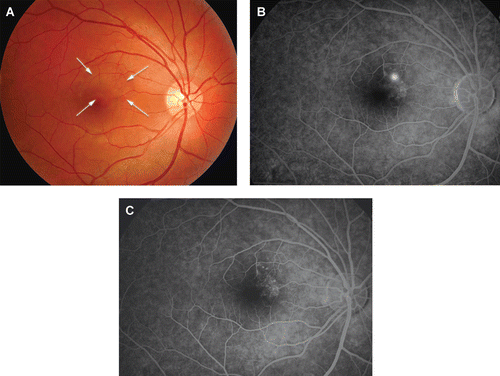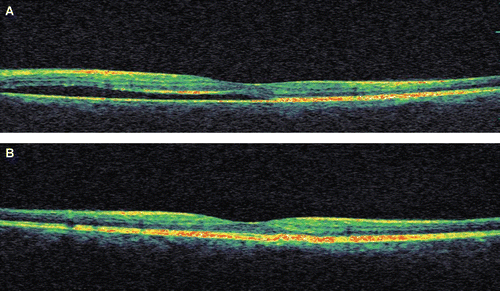Figures & data
FIGURE 1 (A) At presentation, funduscopic examination of right eye shows evidence of an area of indistinct serous elevation with superiotemporal yellowish pigmentation. (Arrows delineate the limits of serous retinal detachment.) (B) Midphase fluorescein angiography (FA) shows progressive enlargement of a focal leakage point superonasal to the fovea and associated retinal pigment epithelial changes. (C) Four weeks after stopping the latanoprost therapy, FA showing resolution of leakage.

FIGURE 2 (A) Baseline horizontal OCT scan shows serous retinal detachment with a few irregularities on outer neurosensory retina related to central serous chorioretinopathy (CSC). (B) After stopping the therapy, significant resolution of submacular fluid was observed in same section of OCT scan with marked decrease of foveal thickening from 345 to 198 μm and visual acuity improved to 20/20.

